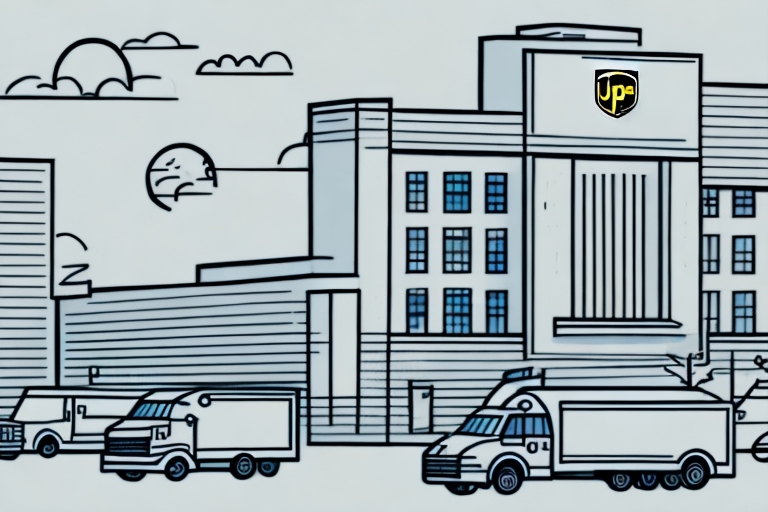Introduction
When it comes to shipping packages, choosing the right service can make all the difference. While there are several options available, UPS and the United States Postal Service (USPS) are two of the most commonly used. This article compares these two shipping services to help you decide which one is better for your shipping needs.
Shipping Rates and Cost-efficiency
One of the most important factors to consider when comparing shipping services is cost. Both UPS and USPS offer different rates depending on the weight, size, and destination of the package. Generally, USPS tends to be more affordable for smaller packages, while UPS is often a better choice for larger or heavier packages due to more competitive rates for these types of shipments. According to the USPS Priority Mail pricing, rates start at $8.70 for a small flat-rate box, whereas UPS pricing varies based on service and distance.
- USPS: More cost-effective for packages under 2 lbs.
- UPS: Better rates for packages over 20 lbs.
- Discounts: UPS offers discounts for volume shipments and business customers.
It's essential to compare prices before choosing a shipping service to ensure you're getting the best deal.
Cost-saving Tips
- Use online shipping tools and print labels from home to save on postage.
- Choose a longer delivery time to reduce shipping costs.
- Consolidate multiple shipments into one package.
- Take advantage of flat-rate shipping options when possible.
Delivery Speed and Reliability
Delivery speed is a critical factor when selecting a shipping service. UPS offers a range of delivery options, including Next Day Air, 2nd Day Air, and 3 Day Select, suitable for urgent shipments. USPS provides services like Priority Mail and Priority Mail Express, which guarantee delivery within 1-3 business days. According to a 2023 report by Consumer Reports, UPS generally has a higher on-time delivery rate compared to USPS, especially for time-sensitive deliveries.
However, delivery times can be affected by external factors such as weather conditions and holidays. During peak holiday seasons, both services may experience delays. Planning ahead and allowing extra time during these periods is advisable.
Tracking and Package Protection
Both UPS and USPS offer tracking options for packages, but there are differences in the level of detail and additional protections provided. UPS provides real-time tracking with detailed updates and offers additional options like signature tracking and proof of delivery for high-value or sensitive shipments. More information can be found on the UPS Tracking Services page.
USPS also offers tracking for most packages through their USPS Tracking tool, including delivery confirmation and email notifications upon delivery. While USPS tracking is reliable, it may not provide as granular real-time updates as UPS.
In terms of package protection, UPS's insurance covers the total value of the package, whereas USPS insurance has a maximum coverage limit. Both services have claims processes for lost or damaged packages, though UPS's process is typically faster and more comprehensive. For more details, visit the UPS Claims Process and the USPS Insurance Information.
Customer Service and User Experience
Customer service plays a vital role in the shipping experience. UPS is renowned for its excellent customer support, offering 24/7 assistance through phone, email, and live chat. You can find more details on their Customer Support page.
USPS also provides customer support via phone and online resources, but some customers report longer wait times and less responsive service compared to UPS. Reviews on platforms like Trustpilot and the Better Business Bureau indicate that while USPS generally receives positive feedback, experiences can vary based on location and specific issues.
User Reviews
According to reviews on Trustpilot and the Better Business Bureau, UPS generally receives higher ratings for reliability and customer support compared to USPS. Customers have praised UPS for its consistent service and efficient problem resolution, while USPS receives mixed reviews based on individual experiences.
Shipping Services and Options
Domestic Shipping
Both UPS and USPS offer a variety of domestic shipping options tailored to different needs. UPS includes services like UPS Ground, UPS 3 Day Select, and UPS Next Day Air, catering to various delivery speed requirements. USPS offers First-Class Mail, Priority Mail, and Priority Mail Express, suitable for different package sizes and delivery speeds.
International Shipping
For international shipments, UPS tends to be more expensive but provides enhanced tracking, insurance, and customs clearance services. USPS offers competitive international rates with options like Priority Mail International and Priority Mail Express International, which may be more affordable but offer fewer features.
According to a 2023 study by Statista, UPS holds a larger market share in international shipping compared to USPS, owing to its comprehensive services and global network.
Convenience and Additional Services
USPS has a widespread network of locations, including post offices, mailboxes, and shipping centers, making it highly accessible, especially in rural areas. UPS also has numerous locations, with additional options like UPS Access Points and home pickup services for added convenience.
Additional Services
- UPS: Extensive packaging options, including specialty boxes for fragile items and temperature-controlled containers for perishables. More details on UPS Packaging Services.
- USPS: Variety of shipping options including Media Mail for books and educational materials. Learn more at the USPS Media Mail page.
Environmental Impact and Sustainability
Both UPS and USPS have implemented initiatives to reduce their environmental footprint. UPS has invested in alternative fuel vehicles, advanced air mobility, and offers carbon-neutral shipping options. More information can be found on their Sustainability page.
USPS has implemented recycling programs, energy-efficient facilities, and has set targets for reducing greenhouse gas emissions. Details of their efforts are available on the USPS Sustainability Report.
According to environmental reports, UPS has been proactive in integrating sustainability into its operations, which may appeal to environmentally conscious consumers.
Conclusion
After comparing UPS and USPS across various factors, it's important to consider your individual shipping needs, budget, and priorities. For affordable rates on smaller packages and widespread accessibility, USPS may be the better choice. For larger or heavier packages, faster delivery times, and comprehensive tracking and insurance, UPS is more suitable. Both services offer distinct advantages, so carefully weigh your options to make the best shipping decision for your needs.






















